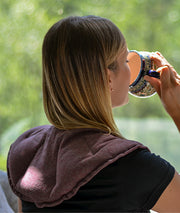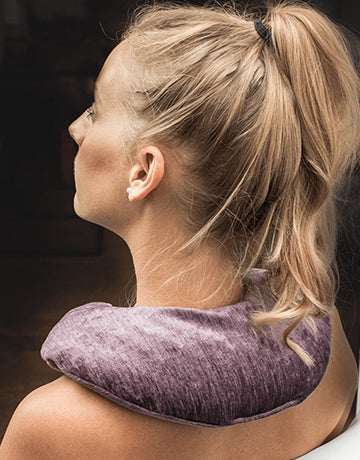Heat and Cold Therapy for Pain Relief: The Gentle Science of Thermotherapy
Key Takeaways:
- Thermotherapy uses temperature—heat or cold—to relieve pain and promote healing naturally.
- Heat therapy relaxes muscles, increases blood flow, and reduces stiffness, ideal for chronic pain and subacute injuries.
- Cold therapy reduces inflammation, swelling, and numbs pain, best for acute injuries and immediate post-injury care.
- Contrast therapy alternates heat and cold to boost circulation and recovery.
- Use heat and cold safely by following timing, application, and contraindication guidelines.
- Thermotherapy complements other treatments like exercise, massage, and herbal remedies for holistic wellness.
Table of Contents
- What is Thermotherapy? An Introduction to Heat and Cold Therapy
- How Heat Therapy Works: Soothing Muscles and Boosting Healing
- Understanding Cold Therapy: Cooling Down Inflammation and Numbing Pain
- Contrast Therapy: The Best of Both Worlds for Recovery
- How to Use Heat and Cold Therapy Safely and Effectively
- Thermotherapy for Common Conditions: Evidence and Effectiveness
- Contraindications and When to Avoid Thermotherapy
- Combining Thermotherapy with Other Treatments for Best Results
- Embrace the Gentle Science of Thermotherapy for Daily Comfort
- FAQ
1. What is Thermotherapy? An Introduction to Heat and Cold Therapy
Thermotherapy refers to the therapeutic use of temperature to relieve pain and promote healing. It includes two main approaches:
- Heat therapy, which uses warmth to relax muscles, improve blood flow, and reduce stiffness.
- Cold therapy (cryotherapy), which applies cold to reduce inflammation, swelling, and numb pain.
Both heat and cold produce unique physiological effects by interacting with receptors and tissues, easing discomfort and speeding recovery. The key is understanding their effects, knowing when to use each, and applying them safely.
2. How Heat Therapy Works: Soothing Muscles and Boosting Healing
Heat therapy is the application of warmth through hot packs, warm baths, steamed towels, or heating pads. It includes dry heat methods (like electric blankets) and moist heat options (such as hot wet towels).
Physiological Effects of Heat
- Vasodilation: Heat widens blood vessels, increasing blood flow for oxygen and nutrients, supporting repair.
- Muscle relaxation: Warmer tissues reduce muscle tension and joint stiffness.
- Increased metabolism: Speeds cellular healing processes.
- Pain modulation: Activates TRPV1 receptors that inhibit pain signals for soothing relief.
When to Use Heat Therapy
- Chronic muscle pain and stiffness, like osteoarthritis or spasms.
- Subacute or chronic injuries after inflammation has reduced.
- Chronic low back pain — sustained low-level heat can outperform some pain medications. Learn more
- Menstrual cramps, by relaxing uterine muscles.
Safety and Precautions
- Do not apply heat on acute inflammation, open wounds, or bleeding areas.
- Avoid if you have impaired sensation or peripheral vascular disease.
- Typical usage: moist heat acts quickly but for shorter durations (up to 2 hours), dry heat can be longer (up to 8 hours).
- Check skin frequently to prevent burns.
3. Understanding Cold Therapy: Cooling Down Inflammation and Numbing Pain
Cold therapy uses ice packs, cold water immersion, or cryotherapy chambers to cool tissues.
Physiological Effects of Cold
- Vasoconstriction: Narrows blood vessels, reducing blood flow to limit swelling.
- Reduced inflammation: Cooling lowers the inflammatory response and fluid build-up.
- Numbing effect: Slows nerve signals, providing pain relief.
- TRPV1 receptor inhibition: Blocks heat-sensing pain signals induced by inflammation.
When to Use Cold Therapy
- Immediately after acute injury (sprains, bruises) within 48 hours.
- Post-surgical swelling and pain.
- Acute low back pain management. More info
- To reduce delayed onset muscle soreness post-exercise.
Safety and Precautions
- Limit sessions to 10-20 minutes to avoid frostbite.
- Never apply ice directly to skin—use a cloth barrier.
- Avoid if you have cold intolerance, Raynaud’s disease, or impaired sensation.
- Use caution with circulatory or neuropathy issues.
4. Contrast Therapy: The Best of Both Worlds for Recovery
Contrast therapy alternates heat and cold treatments, often through hot and cold water immersion or sequential application of heat and ice packs.
Benefits of Alternating Heat and Cold
- Enhanced circulation: Alternating vasodilation and vasoconstriction promotes efficient blood and lymph flow.
- Reduced muscle damage and soreness: Accelerates recovery better than rest alone.
- Pain relief and swelling reduction: Combines soothing warmth and anti-inflammatory cold effects.
When to Use Contrast Therapy
- Subacute injuries moving from inflammation to healing.
- Chronic swelling and muscle recovery phases.
- Athletic recovery protocols.
- Certain chronic pain cases needing multi-modal relief.
Safety Considerations
- Follow same contraindications as heat and cold therapy.
- Carefully monitor skin response.
- Avoid extremes if you have vascular disease or sensory issues.
5. How to Use Heat and Cold Therapy Safely and Effectively
Guidelines for Heat Therapy
- Apply for 15–30 minutes based on pain severity.
- Choose moist heat for faster relief; dry heat for longer-lasting warmth.
- Heat should feel comfortable, never too hot.
- Avoid inflamed, swollen, or broken skin areas.
- Check skin frequently to prevent burns. Learn more
Guidelines for Cold Therapy
- Use cold packs for 10–15 minutes at a time.
- Wrap ice or gel packs in cloth for skin protection.
- Limit exposure to avoid frostbite.
- Apply within first 48 hours of injury for best results.
- Avoid on poor circulation or numb skin areas.
Practical Application Modalities
| Therapy Type | Common Tools | Application Area |
|---|---|---|
| Heat | Hot packs, heating pads, warm baths, steamed towels | Local muscles, joints, back, shoulders |
| Cold | Ice packs, gel packs, cold water immersion, cryotherapy chambers | Acute injuries, swollen areas, post-surgery sites |
| Contrast | Alternating hot and cold water baths or sequential application | Recovery zones post-exercise or subacute injury |
6. Thermotherapy for Common Conditions: Evidence and Effectiveness
Thermotherapy supports pain relief and function improvement in several musculoskeletal conditions:
- Osteoarthritis: Heat reduces stiffness; cold eases flare-up inflammation; customized use helps.
- Rheumatoid Arthritis: Moist heat relaxes joints; cold lowers swelling; caution advised for sensitive joints.
- Low Back Pain: Dry heat aids chronic discomfort; cold suits acute strains; contrast therapy may improve recovery. Explore further
- Muscle Injuries and Soreness: Cold for acute swelling; heat for relaxation in healing; contrast therapy boosts recovery. Read more
- Dysmenorrhea: Heat soothes cramps; cold therapy typically not recommended.
7. Contraindications and When to Avoid Thermotherapy
Avoid Heat Therapy if You Have:
- Acute inflammation, swelling, or injury
- Open wounds or bleeding
- Impaired sensation or neuropathy
- Peripheral vascular disease
- Skin infections or malignancies at treatment site
Avoid Cold Therapy if You Have:
- Cold intolerance or Raynaud’s disease
- Cryoglobulinemia or blood disorders
- Sensory neuropathies or impaired skin sensation
- Circulatory problems or poor arterial flow
General Precautions
- Consult a doctor if you have cardiovascular disease or hypertension.
- Monitor skin during application.
- Stop use if pain, numbness, or skin changes occur.
8. Combining Thermotherapy with Other Treatments for Best Results
- Pair with exercise and physical therapy to improve mobility and strength.
- Combine with massage or gentle stretching for enhanced muscle relaxation.
- Integrate herbal comfort products like KOZI Wellness's handcrafted wraps — discover their benefits.
9. Embrace the Gentle Science of Thermotherapy for Daily Comfort
Whether through the soothing warmth that comforts tired muscles or the refreshing chill that eases acute pain, thermotherapy offers an accessible pathway to relief and healing. Understanding how heat and cold therapies work helps you apply them wisely and safely — turning simple moments of care into impactful steps toward wellness.
At KOZI Wellness, we invite you to restore. rejuvenate. relax. with natural herbal warmth and comfort — because your body deserves gentle care grounded in nature and science.
FAQ
- What’s the difference between heat and cold therapy?
- Heat therapy relaxes muscles and increases blood flow for healing and stiffness relief, while cold therapy reduces inflammation, swelling, and numbs pain, making it best for acute injuries.
- How long should I apply heat or cold therapy?
- Heat therapy sessions usually last 15-30 minutes; moist heat provides faster relief, dry heat lasts longer. Cold therapy should be limited to 10-15 minutes to avoid tissue damage.
- Can I use heat and cold therapy together?
- Yes, contrast therapy alternates heat and cold for enhanced circulation and recovery. Use cautiously and monitor skin response.
- Are there risks with thermotherapy?
- Incorrect use can cause burns, frostbite, or worsen swelling. People with certain conditions (like impaired sensation or vascular disease) should consult a healthcare provider before use.






